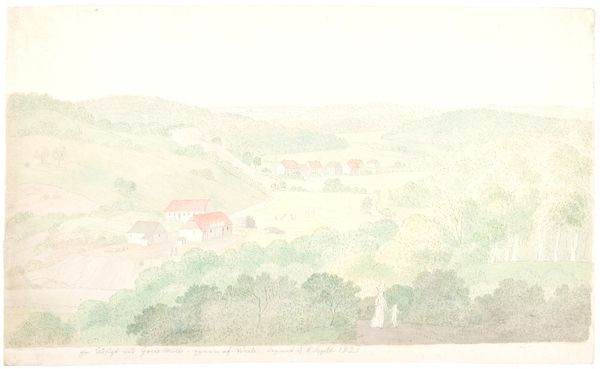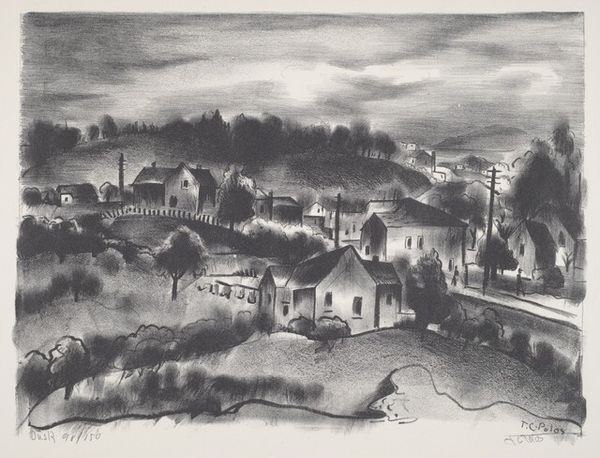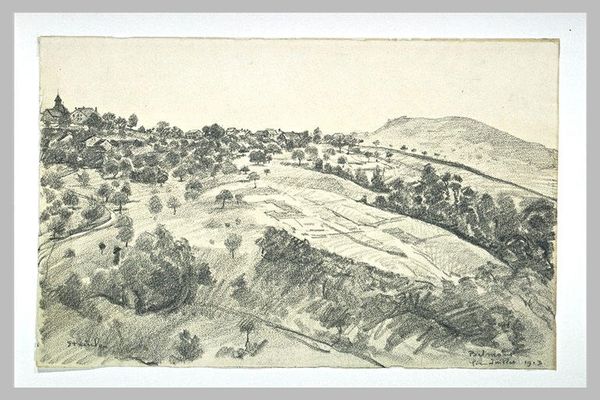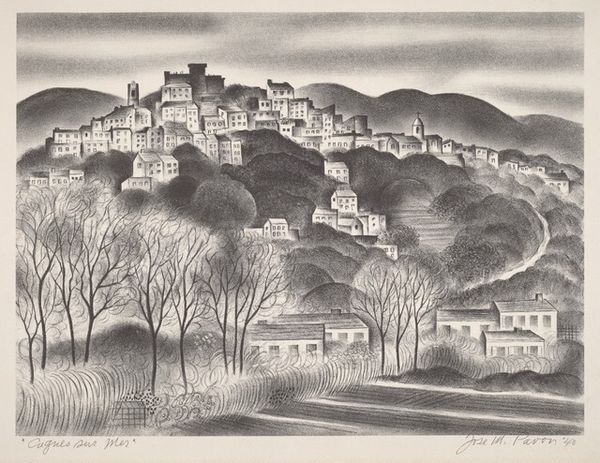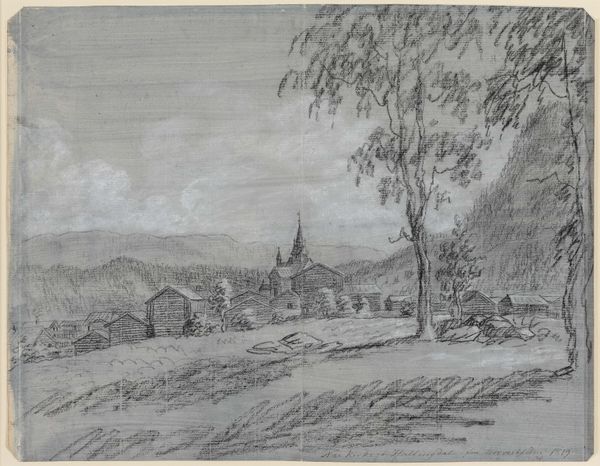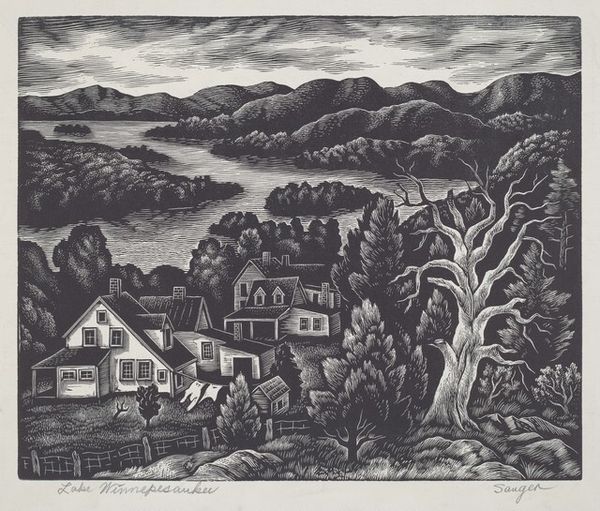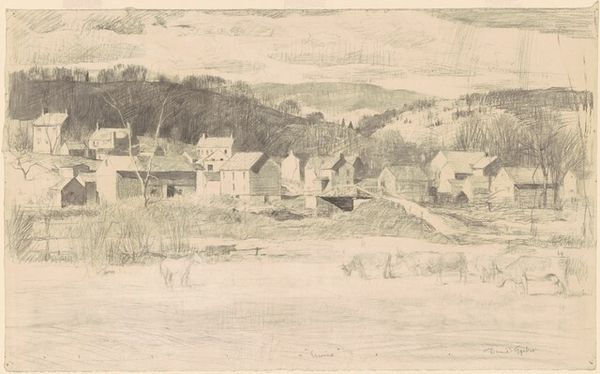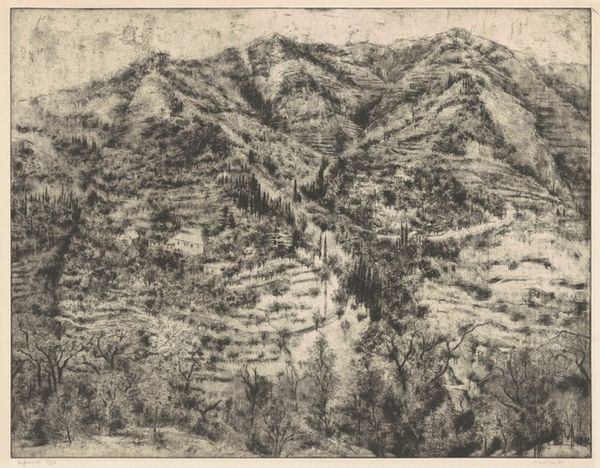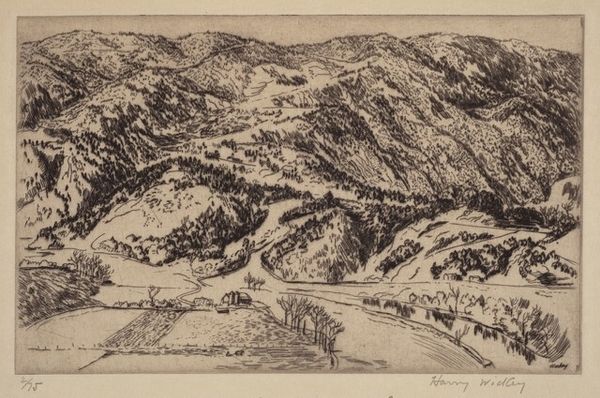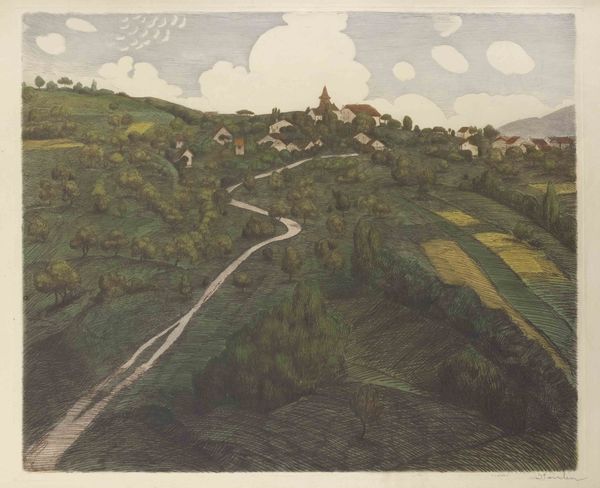
drawing, print, ink
#
pen and ink
#
drawing
# print
#
landscape
#
ink
#
cityscape
#
realism
Dimensions: Image: 329 x 440 mm Sheet: 395 x 490 mm
Copyright: National Gallery of Art: CC0 1.0
Editor: We’re looking at Ruth Chrisman Gannett's "Connecticut Village," created in 1948 using pen and ink. It’s such a detailed depiction of a town nestled in a valley. It feels both charming and slightly unsettling with its near-perfect symmetry. What compositional elements stand out to you? Curator: The intricacy is striking, particularly the interplay of light and shadow achieved solely through line variation and density. Note how Gannett establishes depth, not through conventional perspective, but by compressing space, stacking forms vertically, creating a flattened plane. What impact does this compression have? Editor: I guess it creates a feeling of being slightly overwhelmed, despite the tranquility of the scene. Almost like an intricate pattern repeating itself. Is there any further meaning in her precise application of strokes? Curator: Consider the varying textures she creates with her pen—the wispy foliage contrasting with the rigid architecture. Observe how this attention to detail does not lend itself to individual interpretation; it dictates. There's a rigid and structural nature inherent in realism as well, even though we may perceive the subject as charming. Editor: It’s funny, I didn't consider realism being structural like that. Now, focusing on the medium and looking closely at the marks on the page I see your point about control. Curator: Indeed. It compels us to rethink the relationship between the artist, the subject, and the viewer. Has your perception of the work altered after considering these structural components? Editor: Absolutely. I initially saw a quaint, nostalgic scene. Now, I recognize the artist's control, and the structural framework creating this scene is at the heart of its effect. Curator: Precisely. The formal qualities aren't just decorative; they are fundamental to the work's impact.
Comments
No comments
Be the first to comment and join the conversation on the ultimate creative platform.
